Greetings folks,
I was in the middle of a post about pigeons and seagulls when I received a package from an unknown sender. It was addressed to me using my patronymic—Alexander Grigorievich. Hmmm.
If I had stayed in the Old Country, that’s how strangers and whippersnappers would address me. But here, in the Land of Liberty, no one has ever called me that.
The package contained two beautiful little books of Polaroid photos by the renowned cinematographer Robby Müller
. I’ve mentioned Müller in one of my earlier posts (I don’t remember which), but I’ve never dedicated an entire post to him. Whoever sent me this present (thank you; I owe you one, whoever you are, wherever you are!) must have known about my admiration for Müller’s work. What better time than now to make Robby Müller the main feature of this article? Pigeons and seagulls will have to wait a few days.
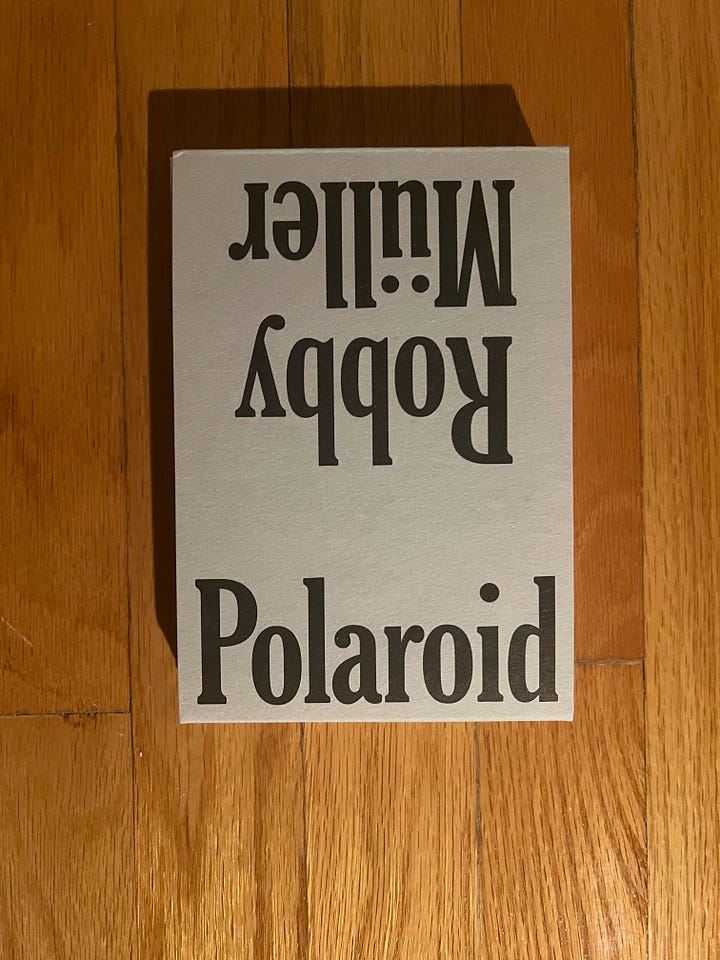
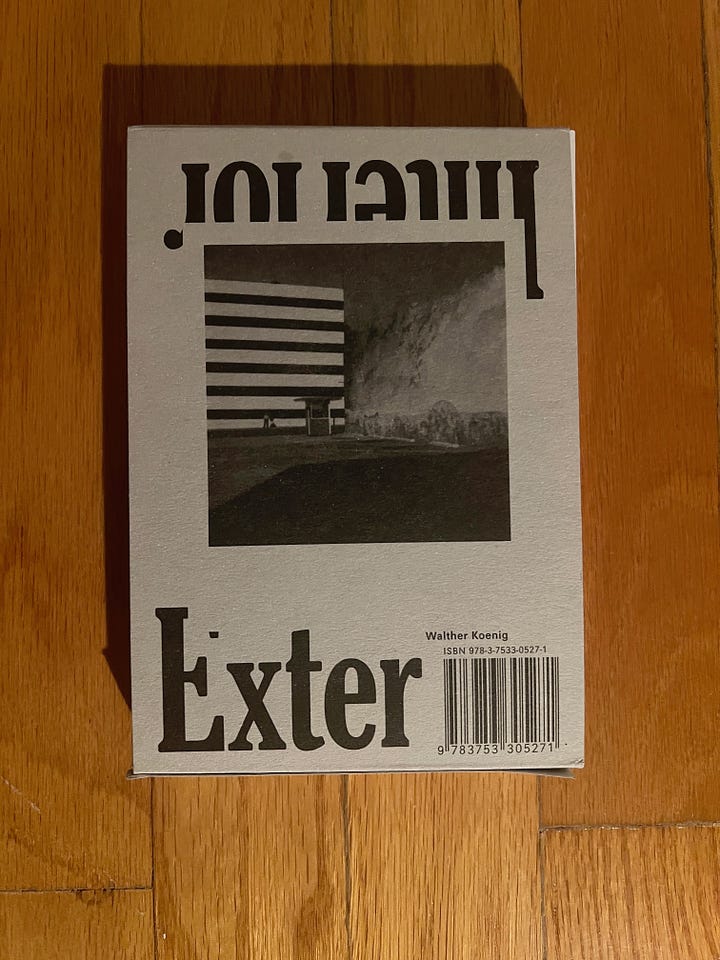
Robby Müller (1940–2018) was a Dutch cinematographer celebrated for his innovative camerawork and exceptional use of light. To say that his work significantly influenced modern film history is an understatement. He was the MASTER OF LIGHT, creating evocative and atmospheric visuals that not only enhanced the emotional depth of the narratives but also captivated audiences with their stunning beauty and intricate detail.
Müller collaborated with directors like Wim Wenders (Alice in the Cities, Kings of the Road, The American Friend, Paris, Texas), Jim Jarmusch (Down by Law, Dead Man), Lars von Trier (Breaking the Waves, Dancer in the Dark), Alex Cox (Repo Man), Barbet Schroeder (Barfly), and many others.
Polaroids: Exterior / Interior offer a unique perspective into Müller’s artistic process. This collection of Polaroid photographs captures his keen eye for composition and light, providing an intimate look at the visual experiments and inspirations behind his cinematic work.
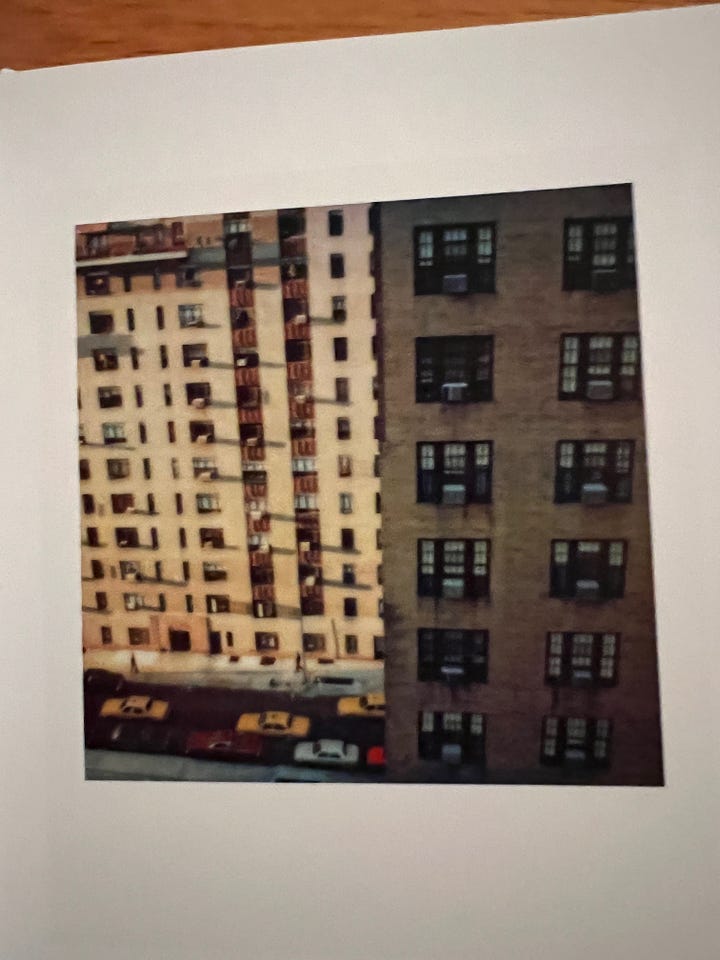
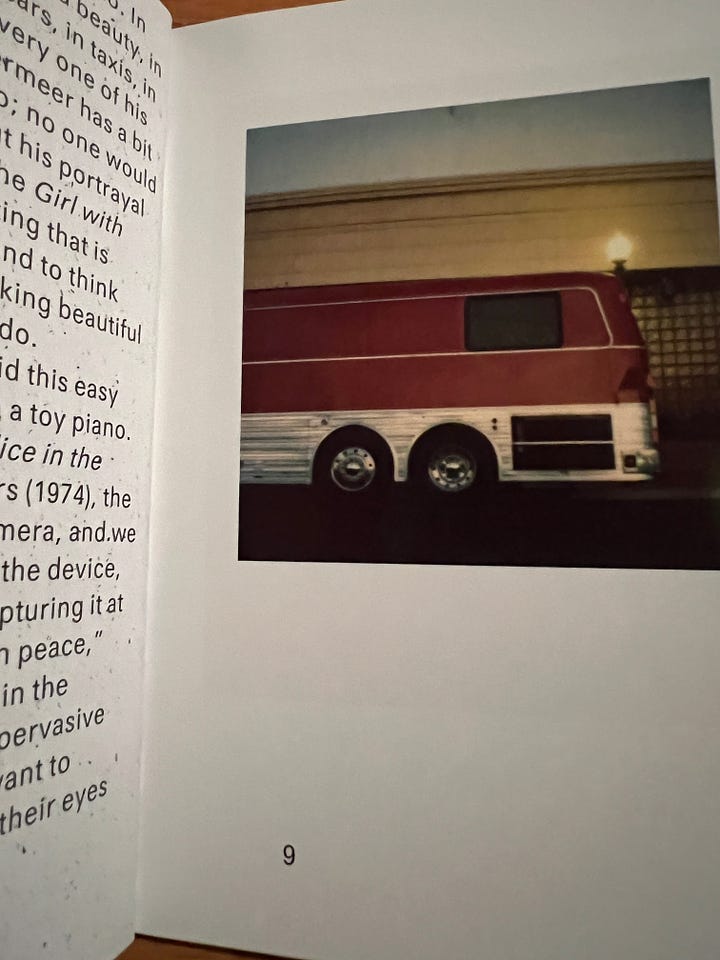
Müller’s passion for light was a defining element of his cinematographic style. He had an extraordinary ability to harness natural glow and create scenes with a painterly quality that emotional depth of the films he worked on.
His approach often involved minimal artificial lighting, relying instead on the interplay of light and shadow to craft visually compelling and realistic environments. This technique set him apart from many of his contemporaries and has been widely studied and admired in the field of cinematography.
The documentary "Living the Light" delves deeper into Müller’s life and career, celebrating his contributions to the art of cinematography. It explores his innovative techniques, his collaborations with prominent directors, and his enduring influence on the industry. Through interviews and archival footage, the documentary paints a comprehensive portrait of Müller, highlighting his unique approach to capturing light and his lasting impact on visual storytelling.
In "Paris, Texas" (1984), for example, Müller’s use of sunlight and vibrant colors creates a striking visual landscape that mirrors the emotional journey of the characters. The film's amazing opening scenes feature vast desert vistas bathed in warm, golden glow, emphasizing the isolation and desolation of the protagonist.
"The American Friend" (1977) demonstrates Müller’s skill in using color to enhance storytelling. He employs vivid, almost surreal color schemes in certain scenes, such as the glowing turquoise of road tunnels and the interplay of red headlights against green car interiors, creating a distinctive neo-noir aesthetic.
For "Breaking the Waves" (1996), Müller employed a handheld camera style and muted color palette to create an intimate, documentary-like atmosphere. This approach gives a raw, emotional quality to the film, enhancing the intensity of the story and performances.
In Jim Jarmusch's "Down by Law" (1986), Müller’s black-and-white cinematography showcases his ability to create mood through light and shadow. The film's prison scenes are particularly notable for their use of stark contrasts and geometric compositions, adding to the claustrophobic atmosphere.
His work consistently elevates visual storytelling, creating memorable and emotionally resonant imagery that complements and enhances the narrative of each film.
This is a short and lively tribute to Müller by the Italian cinematographer Pierro Basso, who now serves as the chair of the New York Film Academy.
And here’s "Living the Light", the aforementioned documentary about Müller.
As always, thanks for reading and for being a subscriber.
If you like this post, share it! If you’re not yet a subscriber, what are you waiting for?
Til next time,
ak

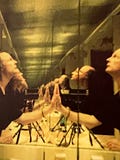

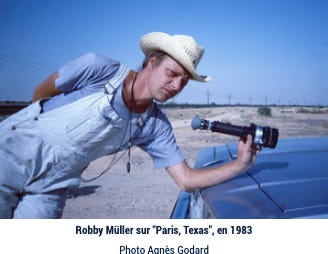
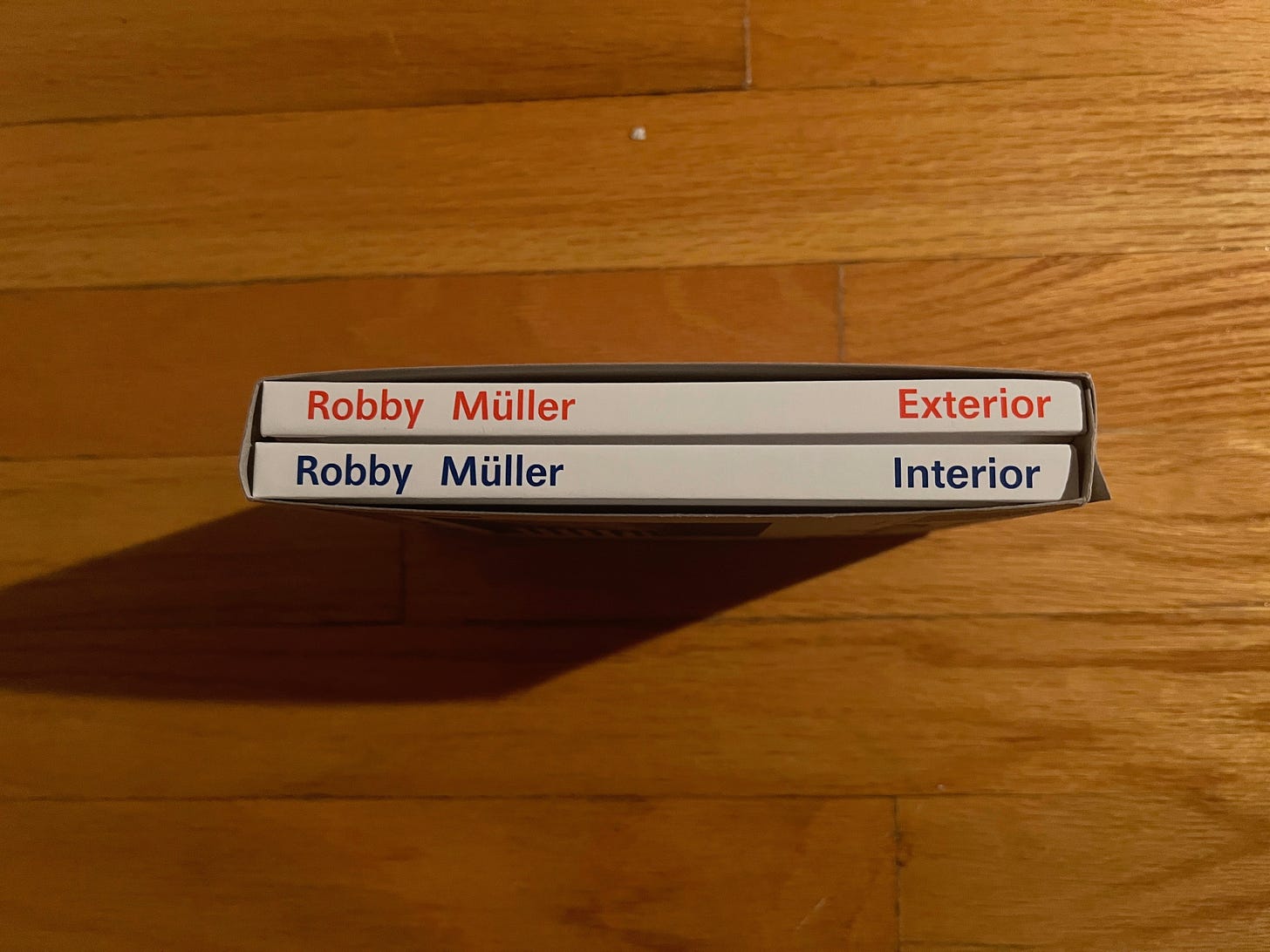


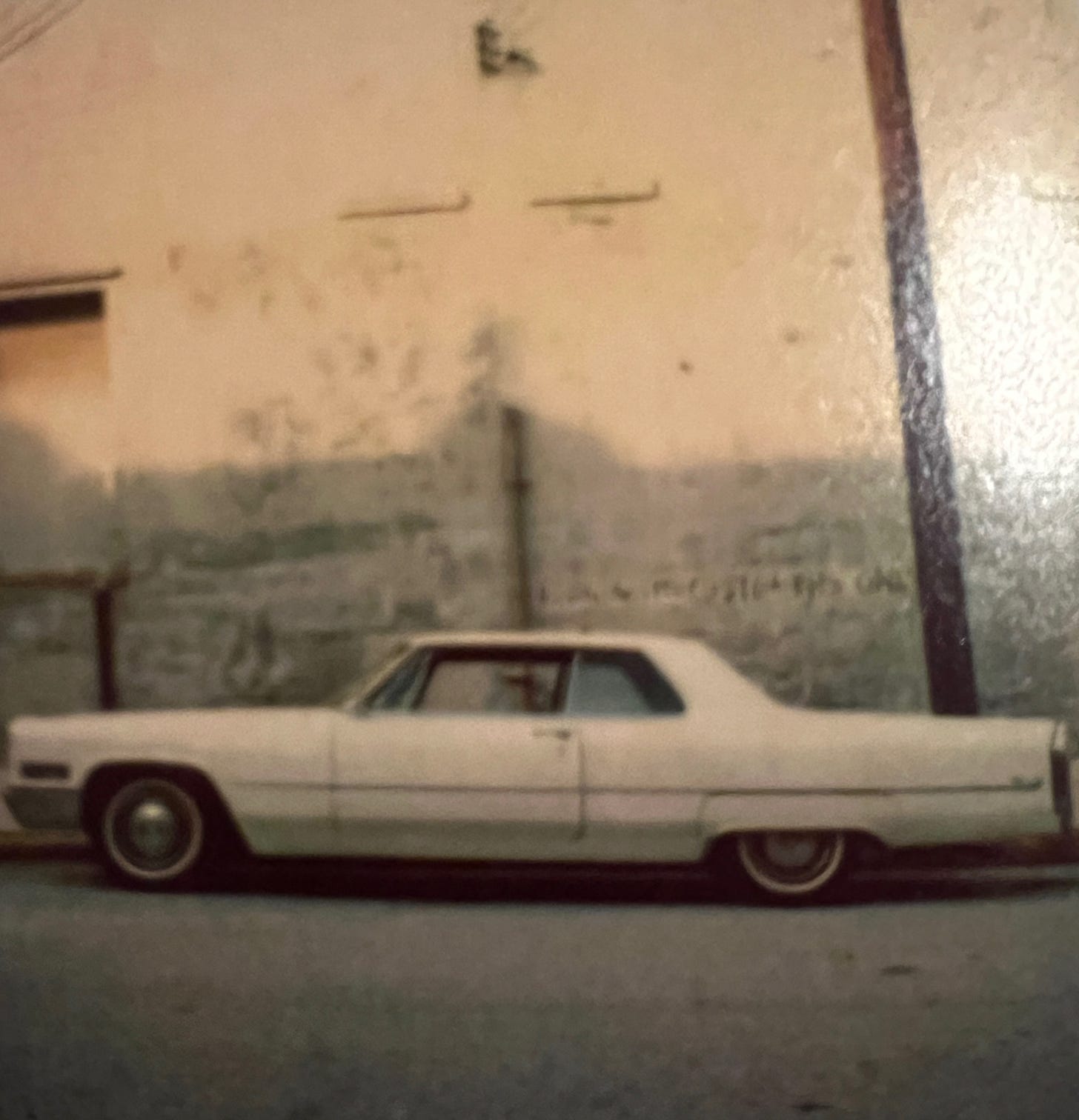
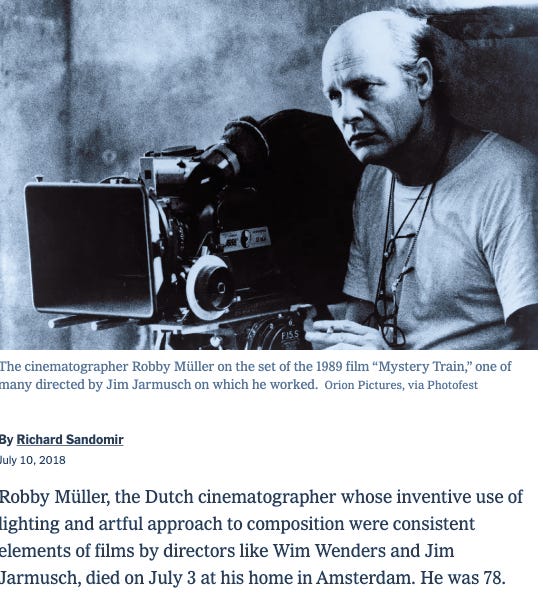
RIP, Robby.
Thanks for a valuable notification. But, AK, no matter how much vodka I will ever consume, I'm not calling you Alexander Grigorievich, so please don't ask!
I know what movies I'll be binging now. I need to rewatch with Muller in mind. Thx.